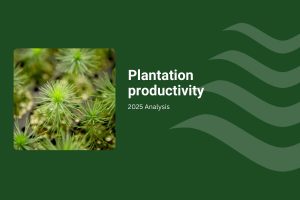Sales of Treated Structural H2F timber for the year ended June 2015 were 533,700 m3, up 12.2% from 475,800 m3 recorded for the prior year. Although backed off slightly from the year-end record of 536,800 m3 recorded in April 2015, the growth in H2F sales remains very strong, even as total softwood sales begin to back off.
Sales in June 2015 were 44.3km3, a rise of 4.0% on the prior month and 1.4% higher than for June 2014. Although the next few months will tell, it does seem that the bench under sales of H2F is approximately 35.0 km3 per month. Only the soft seasonal demand in summer has been lower for the last two years.
That said, the trend line in the chart below shows that H2F sales may have peaked, or that possibly a downturn may be imminent. However, the better argument is likely to be that H2F is facing the same sales and capacity pressures applying to all sawn softwood sales and is entering a period of stability. We can say this with some certainty because the alternate product, untreated Structural less than 120mm is trending decidedly downwards.

To go straight to the dashboard and take a closer look at the data, click here.
The H2F situation contrasts with that of its main competitor product, Structural Softwood of less than 120mm. For the year ended June 2015, sales of Structural <120 fell 1.9% to 753.6 km3, down from 768.1 km3 for the prior year.
Unlike H2F for which sales rose month-on-month in June 2015, sales of Structural <120 declined a modest 0.5%, recording 62.1 km3. A year earlier, in June 2014, monthly sales were 8.8% higher at 68.1 km3. The contrasting sales of Structural <120 are shown in the chart below.

To go straight to the dashboard and take a closer look at the data, click here.
Contrasts aside, there is no escaping the fact that in total, sales of these two products that are essentially the same wood, have grown over the last year. For the year ended June 2014, combined, these grades amounted to 1243.9 km3. For the year just ended, they amounted to 1,287.3 km3, a combined lift of 3.5% over the year.
In a year when total softwood sales declined by 2.0%, solid demand for these major contributors (amounting to almost 49% of total sawn softwood sales) are all the more important, especially as the sector faces growing import competition.



